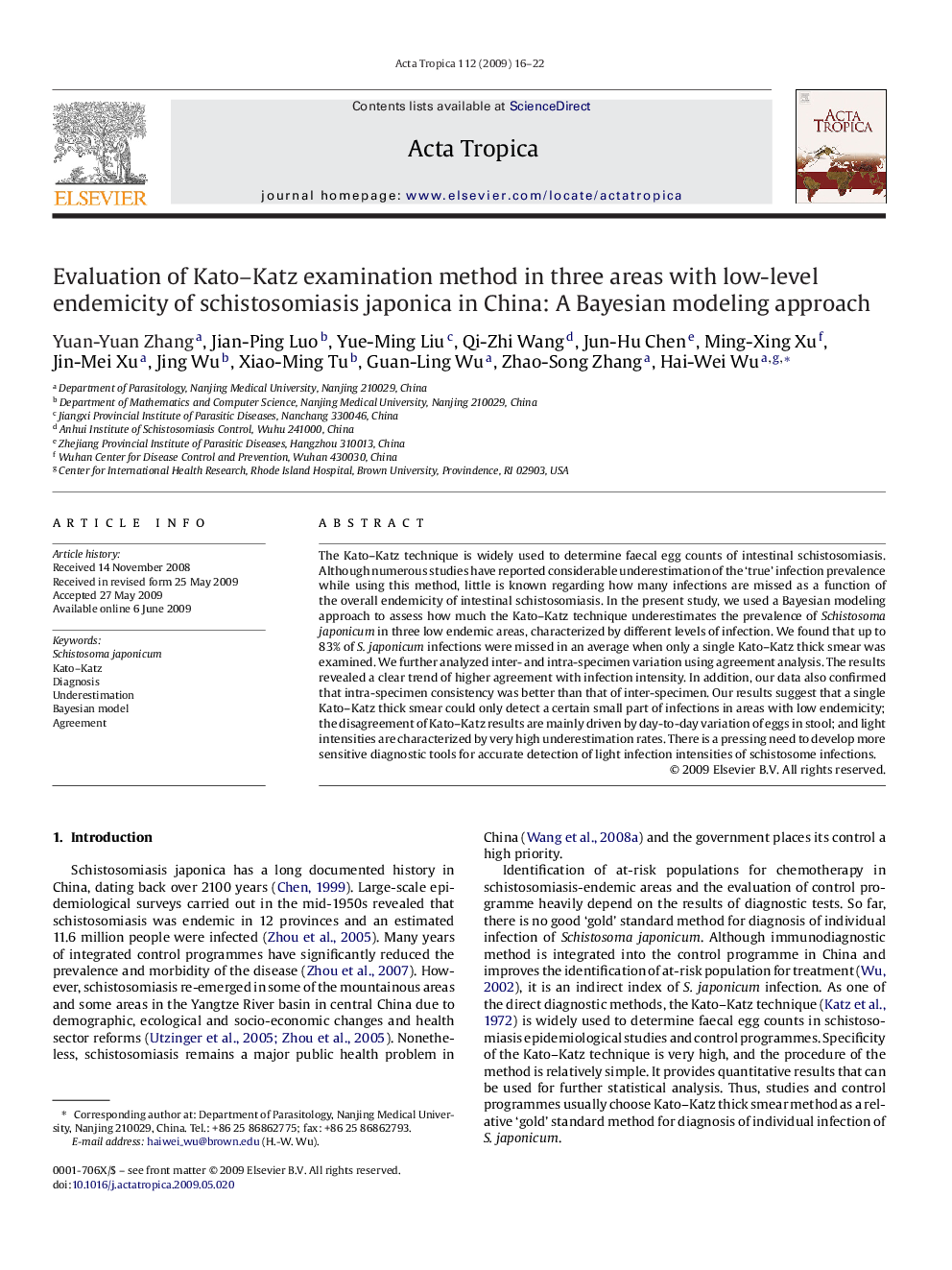| Article ID | Journal | Published Year | Pages | File Type |
|---|---|---|---|---|
| 3394057 | Acta Tropica | 2009 | 7 Pages |
The Kato–Katz technique is widely used to determine faecal egg counts of intestinal schistosomiasis. Although numerous studies have reported considerable underestimation of the ‘true’ infection prevalence while using this method, little is known regarding how many infections are missed as a function of the overall endemicity of intestinal schistosomiasis. In the present study, we used a Bayesian modeling approach to assess how much the Kato–Katz technique underestimates the prevalence of Schistosoma japonicum in three low endemic areas, characterized by different levels of infection. We found that up to 83% of S. japonicum infections were missed in an average when only a single Kato–Katz thick smear was examined. We further analyzed inter- and intra-specimen variation using agreement analysis. The results revealed a clear trend of higher agreement with infection intensity. In addition, our data also confirmed that intra-specimen consistency was better than that of inter-specimen. Our results suggest that a single Kato–Katz thick smear could only detect a certain small part of infections in areas with low endemicity; the disagreement of Kato–Katz results are mainly driven by day-to-day variation of eggs in stool; and light intensities are characterized by very high underestimation rates. There is a pressing need to develop more sensitive diagnostic tools for accurate detection of light infection intensities of schistosome infections.
